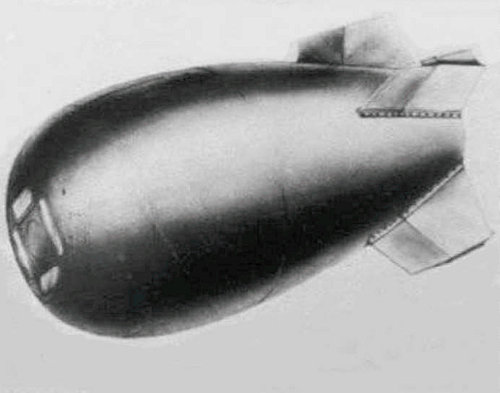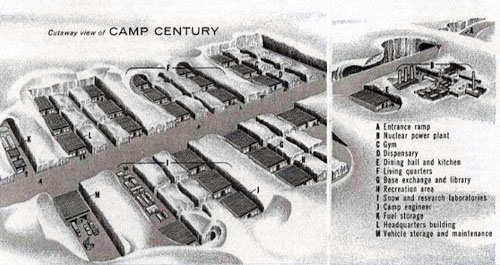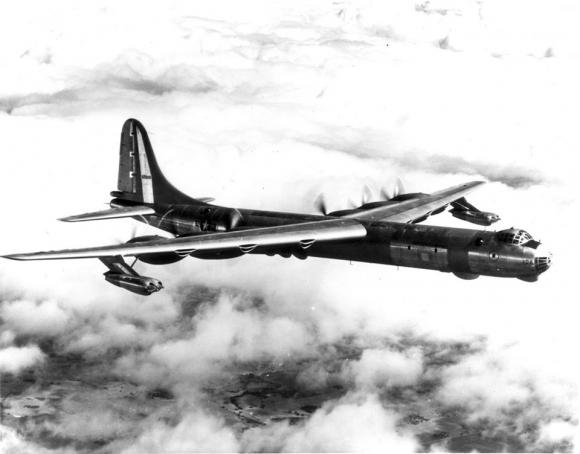Is there a nuclear bomb on the bottom of the British Columbia seas?
Professional diver Sean Smyrichinsky has discovered a metal device with a rounded shape and the size of a 'king size' bed, which could be reminiscent of a flying saucer near the Haida Gwaii archipelago in British Columbia.
What he first thought could be a UFO, could turn out to be a nuclear bomb lost more than half a century ago by the United States Air Force.
This was declared by the Canadian Department of National Defense (DND).
The object lying on the bottom of Pitt Island, could in fact be the Mark IV, a nuclear fission bomb of greater power than the one dropped on Nagasaki, lost by the intercontinental B-36 bomber PeaceMaker crashed the 13 February 1950.
Taking off from the Carswell Air Force Base, in Texas, the bomber had to simulate a nuclear strike to assess the aircraft's capabilities, when the fire of one of the 6 engines forced the crew to abandon the plane that crashed into an unspecified area among the mountains of British Columbia. Of the 17 crew members who launched off the Princess Royal Island, 5 lost their lives. The mission caused the first case in the history of a Broken Arrow (code name of a nuclear weapon incident). The dynamics of the accident, which occurred at the height of the Cold War, remained long covered by military secrecy.
 According to the historian Dirk Septer, the American government tried for a long time to locate the wreck to recover the weapon, but when he finally found it, the device was gone. The research continued for years, but unlike the epilogue to the accident that occurred on Thule, the device was never found causing a striking case of Russophobia.
According to the historian Dirk Septer, the American government tried for a long time to locate the wreck to recover the weapon, but when he finally found it, the device was gone. The research continued for years, but unlike the epilogue to the accident that occurred on Thule, the device was never found causing a striking case of Russophobia.
The Canadian and American authorities have agreed that the discovery of the diver, who was simply hunting for 'sea cucumbers' on the bottom of the Pacific, could probably be the lost bomb. The US government has declared that the bomb is not a 'potential threat', while a unit from the Royal Canadian Navy was sent to the site for further verification.
That US nuclear base abandoned under the ice during the cold war
Among the icy ice sheets of Greenland, not too far from the USF Thulé air base (photo opening) - not to be confused with the Pan-Germanist association with esoteric interests arising during Nazism (...) - a secret underground base abandoned in 1967 stands slowly coming to light because of a variable that the Pentagon had not opportunely calculated: climate change.
Dating back to the Cold War, classified as 'top secret' until unsuspecting times, the base was built in 1959 and named 'Century Camp'. It was to be what Cuba would have been for the USSR: an advanced launching platform with the strategic aim of launching ICBM (InterContinental Ballistic Missile) and MRBM (Medium Range Ballistic Missile) missiles on Moscow and other fundamental objectives of the Soviet Union in case of a nuclear escalation.
If in 1960 the base was protected by 35 meters of ice, today, due to the increase in temperature caused by climate change, it is only the 8 meters of ice that cover the underground base which, ironically, began to operate under the 'science field' coverage to study climate change in the Arctic region. 50 years after its abandonment, a new report on the base raises concerns in Greenland, Denmark and the USA based on global warming and how much would remain of the base.
 Although official versions of the Pentagon reveal that in reality no nuclear warheads were ever stored in the base - "because of the tests on the shifting of the Arctic shell that made it immediately clear that the underground tunnels would gradually collapse" - well 200.000 liters of diesel (53.000 gal), waste water, and an undetermined amount of nuclear waste produced by the first mobile nuclear generator installed in the 1960 have been trapped in the 'city under the ice'. Although climate change also includes heavy snowfalls that icy year after year reapply part of the Arctic ice cap, it is estimated that in the 2090 the ice will start to melt even faster than it is laid: with the risk of bringing to light all the waste that the 'Century Camp' has left behind with potentially disastrous environmental outcomes.
Although official versions of the Pentagon reveal that in reality no nuclear warheads were ever stored in the base - "because of the tests on the shifting of the Arctic shell that made it immediately clear that the underground tunnels would gradually collapse" - well 200.000 liters of diesel (53.000 gal), waste water, and an undetermined amount of nuclear waste produced by the first mobile nuclear generator installed in the 1960 have been trapped in the 'city under the ice'. Although climate change also includes heavy snowfalls that icy year after year reapply part of the Arctic ice cap, it is estimated that in the 2090 the ice will start to melt even faster than it is laid: with the risk of bringing to light all the waste that the 'Century Camp' has left behind with potentially disastrous environmental outcomes.
The Pentagon has declared "fully understand the reality of climate change and the risks that global warming could cause in this case", adding that the US government has promised"work with the Danish Government and the Greenland authorities to resolve all relevant safety issues".
Greenland was already at the center of an incident that caused radioactive waste to spill over its territory due to American fault when in January of 1968 (a year after the formal abandonment of the base), a B-52G Stratofortress of the 380th Strategic Bomb Wing USAF crashed during the "Hard Head" mission causing a "Broken Arrow" code to be declared (accidental event involving nuclear weapons, ed): the aircraft in fact had 4 B28FI hydrogen bombs on board (photo below) which did not explode thanks to the security systems, but released radioactive material during the fire following the crash. All 7 crew members managed to parachute.












